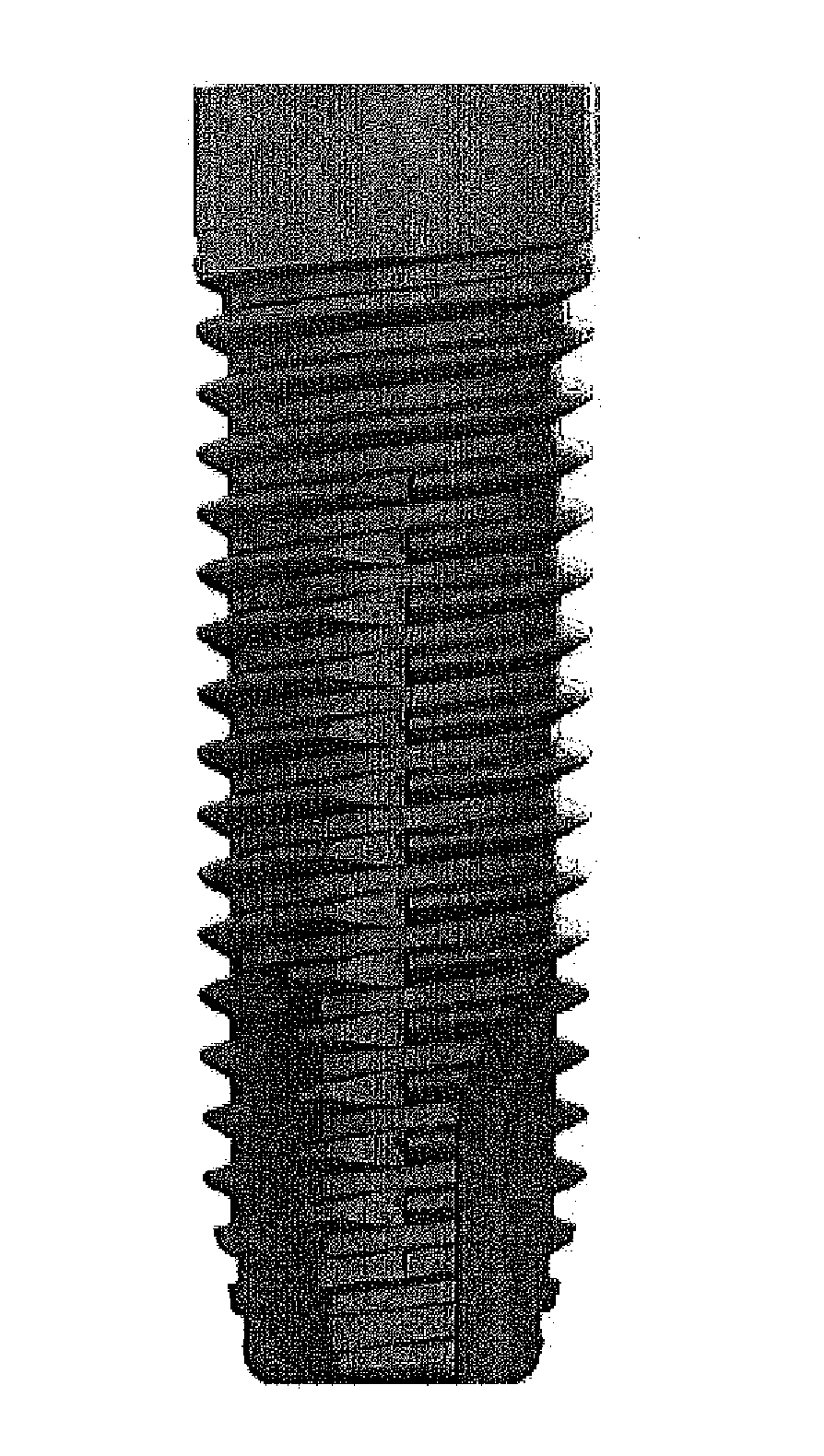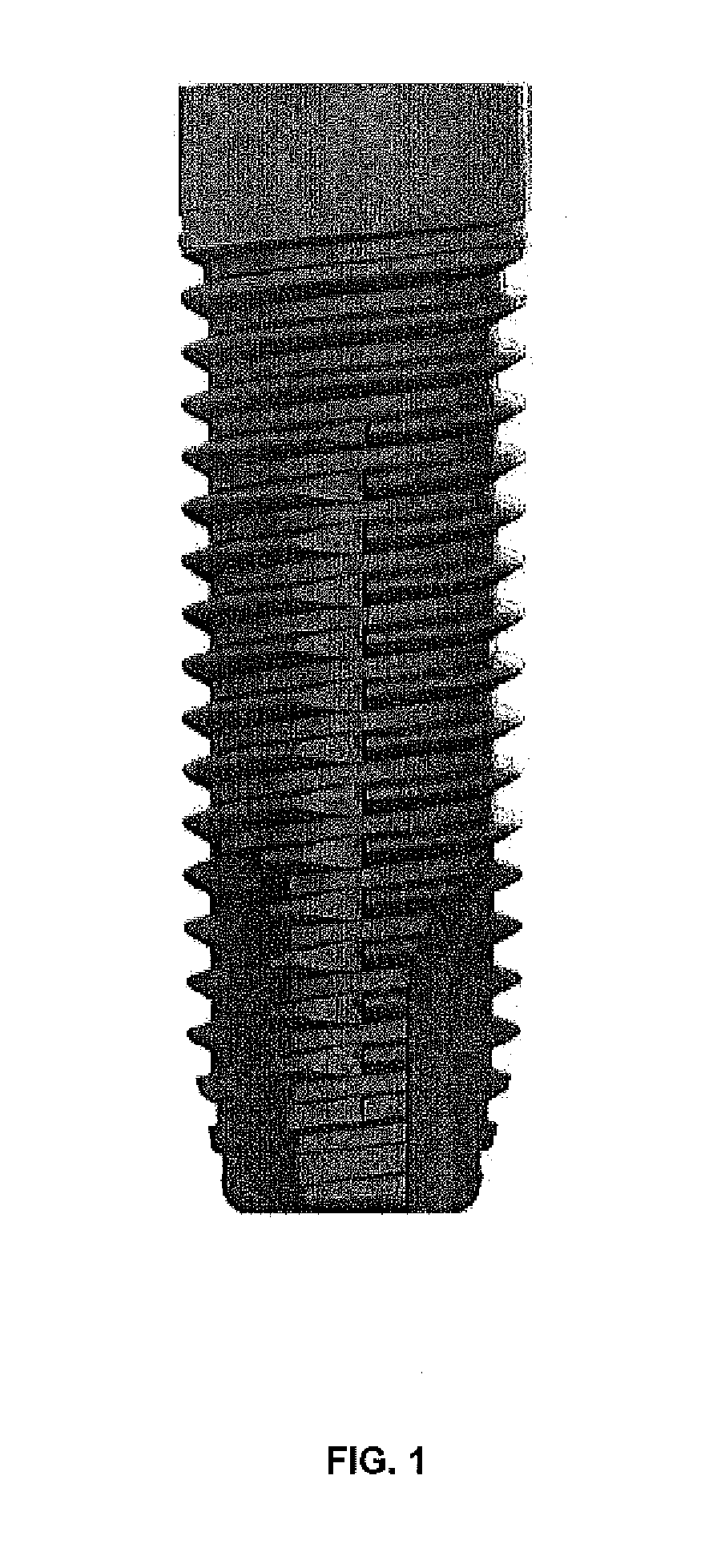Surface treatment process for implantable medical device
a technology for medical devices and surface treatment, applied in the direction of impression caps, ligaments, prostheses, etc., can solve the problems of insufficient water absorption or and achieve the effect of increasing the hydrophilicity of the surface and at least a small par
- Summary
- Abstract
- Description
- Claims
- Application Information
AI Technical Summary
Benefits of technology
Problems solved by technology
Method used
Image
Examples
example
[0036]The following is an example of a method for treating dental implants in accordance with one embodiment of the surface treatment process of the present invention.
[0037]Method:
[0038]1. A batch of dental implants were mounted on polytetrafluoroethylene (PTFE) holders, cleaned in an ultrasonic bath of distilled water and then air dried;
[0039]2. The dry implants were then placed in an ultrasonic bath filled with a 1% aqueous solution of fructose for 3 minutes;
[0040]3. The implants were then dried (with their tip pointing upwards) in a forced convection oven for 10 minutes at 50 degrees centigrade;
[0041]4. Steps 1 to 3 were repeated for separate batches of dental implants using 5% and 10% fructose solutions.
Results:
[0042]All samples exhibited excellent wetting, when tested. Specifically, the measured contact angle on all samples was 0 degrees. Moisture analysis and conductivity analysis of the samples revealed that the implants treated with 1% fructose solution contained 0.247% mois...
PUM
| Property | Measurement | Unit |
|---|---|---|
| temperature | aaaaa | aaaaa |
| temperature | aaaaa | aaaaa |
| roughness | aaaaa | aaaaa |
Abstract
Description
Claims
Application Information
 Login to View More
Login to View More - R&D
- Intellectual Property
- Life Sciences
- Materials
- Tech Scout
- Unparalleled Data Quality
- Higher Quality Content
- 60% Fewer Hallucinations
Browse by: Latest US Patents, China's latest patents, Technical Efficacy Thesaurus, Application Domain, Technology Topic, Popular Technical Reports.
© 2025 PatSnap. All rights reserved.Legal|Privacy policy|Modern Slavery Act Transparency Statement|Sitemap|About US| Contact US: help@patsnap.com


